Review of the Airspy Mini
The Airspy Mini is a recently released $99 USD software defined radio with a tuning range of 24 MHz to 1800 MHz, 12-bit ADC and up to 6 MHz of bandwidth. The Mini is the younger brother of the $199 USD Airspy R2, but despite the $100 USD price difference, both units are very similar, which makes the Mini a very attractive option. The idea is that the Mini is the cheaper version for those who do not need the more advanced features of the R2.
In a previous review we compared the Airspy R2 with the SDRplay RSP and the HackRF. In those tests we found that the Airspy had the best overall RX performance out of the three as it experienced the least amount of overload and had the most dynamic range. The SDRplay RSP was the main competitor in performance to the Airspy R2, and was found to be more sensitive due to its built in LNA. But the RSP experienced overloading and imaging problems much easier. With an external LNA powered by its bias tee, the Airspy gained a similar sensitivity and still had very good dynamic range. The main downside to the Airspy R2 was its higher cost compared to the $149 USD SDRplay RSP, and needing to fork even more for the $50 USD SpyVerter if you want to listen to HF signals.
In this review we'll compare the difference between the R2 and Mini, and also see if the cheaper Airspy Mini ($99 USD), or Airspy Mini + SpyVerter combo ($149 USD) can compete in this lower price range.
Difference Between the Mini and R2
| Airspy Mini | Airspy R2 | |
| Price | $99 USD | $199 USD |
| Tuning Range | 24 - 1800 MHz | 24 - 1800 MHz |
| ADC Bits | 12 | 12 |
| Maximum Bandwidth (Alias Free Usable) | 6 MHz (5 MHz) | 10 MHz (9 MHz) |
| Extras | Bias Tee | Bias Tee, External clock input, Multiple expansion headers |
| Dimensions (Including USB and SMA ports) | 7.7 x 2.6 x 1 cm | 6.4 x 2.5 x 3.9 cm |
| Weight | 21 g | 65 g |
Right now the "early bird" price of the Mini is $99 USD. We are unsure if this price will go up in the future.
The external design between the two units is different. The Mini comes in a USB dongle form factor which is very similar to a standard RTL-SDR, whilst the R2 comes in a larger box with a female Micro USB input. In our tests this metal enclosure appears to provide good shielding from strong signals. One thing that was missing on the unit was a nut and washer on the SMA connector. Adding a nut helps the PCB ground make good contact with the aluminum enclosure. The Airspy team have said that future units will come with this nut provided.
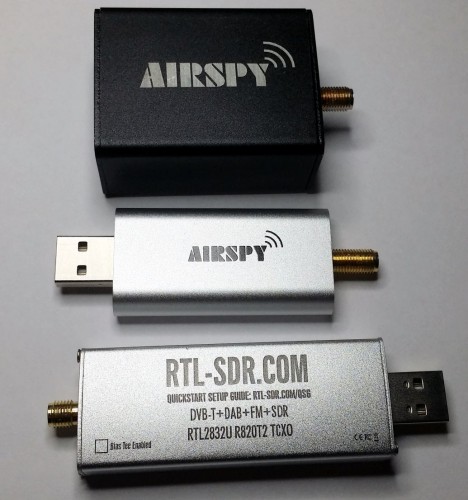
Apart from the price and enclosure, the most noticeable feature difference between the two is the smaller bandwidth of the Airspy Mini. Unlike the Airspy R2, the Airspy Mini does not use a Si5351 clock generator chip. The lack of this chip limits the Mini's maximum bandwidth to 6 MHz and eliminates any ability to use an external clock. The main applications that you miss out on from the lack of an external clock input include: coherent clock, passive radar and direction finding experiments.
From the circuit photos below we can see that the Mini consists of mostly the same parts used in the Airspy R2. Missing is the Si5351 clock controller, expansion headers and the external clock input.

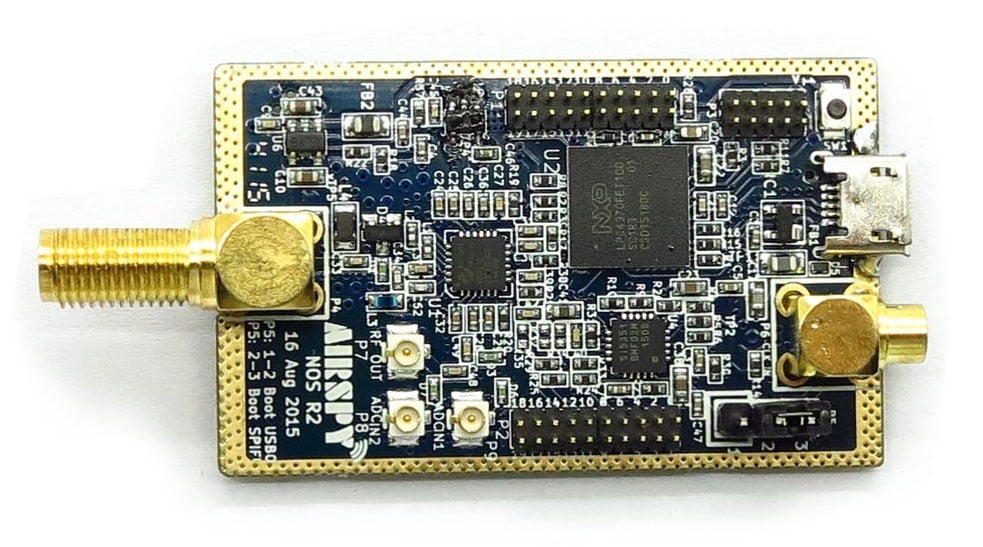
Setup
Like the Airspy R2, the Mini is very easy to set up. We simply plugged it into the PC, opened SDR#, selected the Airspy in the drop down menu and pressed play. And it worked.
With its 6 MHz lower sample rate the Mini works fine on our older first and second generation i5 PCs which can not smoothly run the R2 at its maximum bandwidth of 10 MHz. For PCs that struggle, there is also the option to turn on "packing" which will reduce the data transfer rate, or to reduce the bandwidth to the 3 MHz option. We have heard that the R2 now also supports the 6 and 3 MHz option too with the latest firmware.
Signal Performance
Here we tested the Airspy Mini in SDR#, the official software.
As expected the RX performance of the Mini is pretty much identical compared to the R2. As such, overloading in the Mini is rare and the spectrum always looks very clean, only showing real signals, and no images. See our previous review for more information on the Airspy signal performance.
The smaller bandwidth is still wide enough to look at several wide band signals, and is large enough for most general signal browsing purposes. However, whilst the bandwidth of the device is advertised as 6 MHz, in reality you are only likely to be able to use about 5 MHz as the edges have roll off and aliasing. SDR# automatically limits the visible bandwidth to 80%, which gives 4.8 MHz when run in 6 MSPS mode, and 2.4 MHz when run in 3 MSPS mode. Although the visible bandwidth is 80% lower, that unusable 20% still helps with decimation, resulting in better SNR.
Below we present some screenshots comparing the Airspy R2 and Mini on some trunking channels in their 10 MHz and 6 MHz modes. SNR and the spectrum is nearly identical, only difference is the bandwidth.
Again compared on L-band Inmarsat AERO signals using a decimation value of 16 for the Mini and 32 for the R2. Almost identical performance.
Airspy Mini vs R2 Lband
The Mini actually does unofficially support a 10 MSPS (10 MHz) mode, however because of the lack of the Si5351 clock controller, in this mode there are two fixed spurs visible, plus some other potential spurs at other locations in the frequency spectrum too. These spurs may or may not affect the usefulness of this unofficial mode for you. To use this mode edit the SDRsharp.config file and set the "airspy.debug" key to 1. Now in SDR# you can manually enter 10 MSPS into the sample rate selector and push enter. We must also warn that in this debug mode there are several additional buttons exposed that could cause the eeprom to be flashed incorrectly, thus damaging your device. Please take care not to press on these.
In the screenshot below notice the two spurs which show up on the Airspy Mini running in the unofficial 10 MHz mode.
Airspy Mini vs R2 Trunking Unofficial 10 MHz Mode
Spectrum Spy (Spectrum Analyzer) Performance
The SDR# download includes a program called Spectrum Spy. This program allows you to do a frequency scan on a large bandwidth between 24 - 1800 MHz. This essentially turns the device into a wide band spectrum analyzer. Spectrum Spy works well with the Airspy Mini, but the R2 works even better, scanning about twice as fast, since the bandwidth of the mini is almost halved. Still, the scan speed is incredibly fast. Scanning 1 GHz of bandwidth takes about 1 second on the Airspy R2, and 2 seconds on the Airspy Mini.
Airspy Mini GSM Band
Airspy R2 GSM Band
Airspy Mini 1 GHz Scan
Airspy R2 1 GHZ Scan
HF Reception
As the Airspy R2/Mini can only receive 24 MHz at it's lowest, an upconverter is required for the lower HF frequencies. The Airspy team recommend using the official SpyVerter upconverter which costs 49 USD. We reviewed the SpyVerter in a previous post and believe that the Spyverter is the best upconverter on the market at the moment. The Airspy Mini is fully compatible with the SpyVerter and it can be powered with its bias tee. Again, RX performance of the Airspy Mini + SpyVerter is pretty much identical to the R2. The main loss is that the smaller bandwidth reduces the amount of decimation used.
ADS-B
The Airspy software in the SDR# package comes with a good ADS-B decoder. For ADS-B decoding, both the Mini and R2 units are pushed up into a special 20 MSPS mode to improve decoding on the wideband ADS-B signals. This means that the Airspy R2 and Airspy Mini should have similar performance when decoding ADS-B.
(You might wonder why SDR# limits the sample rate of the Mini to 6 MSPS, when it is capable of running at 20 MSPS as we can see with ADS-B. The reason is that the Airspy ADS-B decoder runs in RAW mode, and as with the special debug 10 MSPS mode produces spurs resulting in a less clean spectrum, though these spurs have no effect on wideband noise tolerant signals like ADS-B.)
We compared the Airspy Mini and the R2 on ADS-B with a FlightAware ADS-B antenna, Habamp ADS-B LNA and 10m of coax cable fed into a 2-way signal splitter. One Airspy was used to power the habamp via its bias tee. Results show that the number of aircraft received and frame receive rate were almost identical.
Within the next few months we will test the Airspy against the SDRplay RSP and FlightAware ADS-B optimized RTL-SDR dongle on ADS-B reception.

Other Screenshots of the Mini
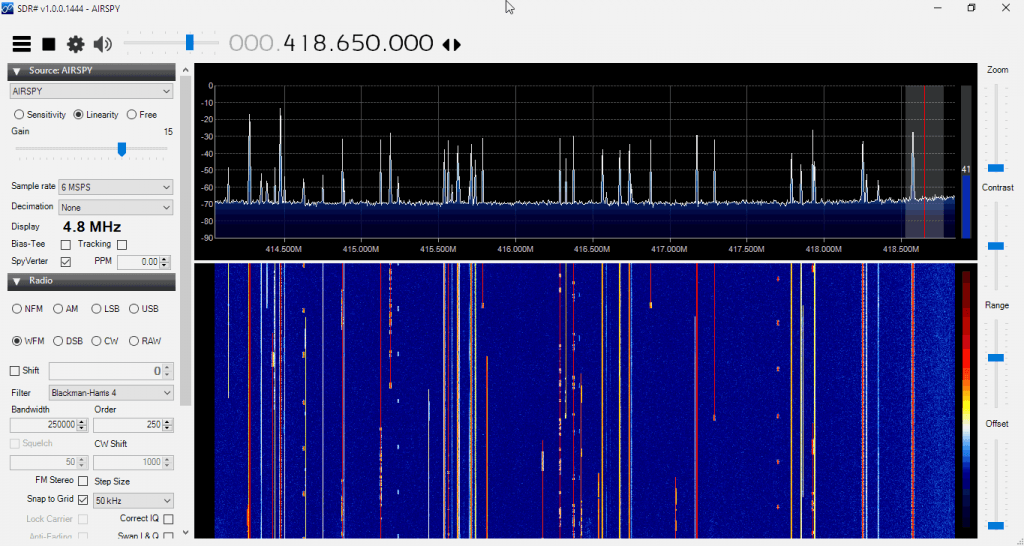
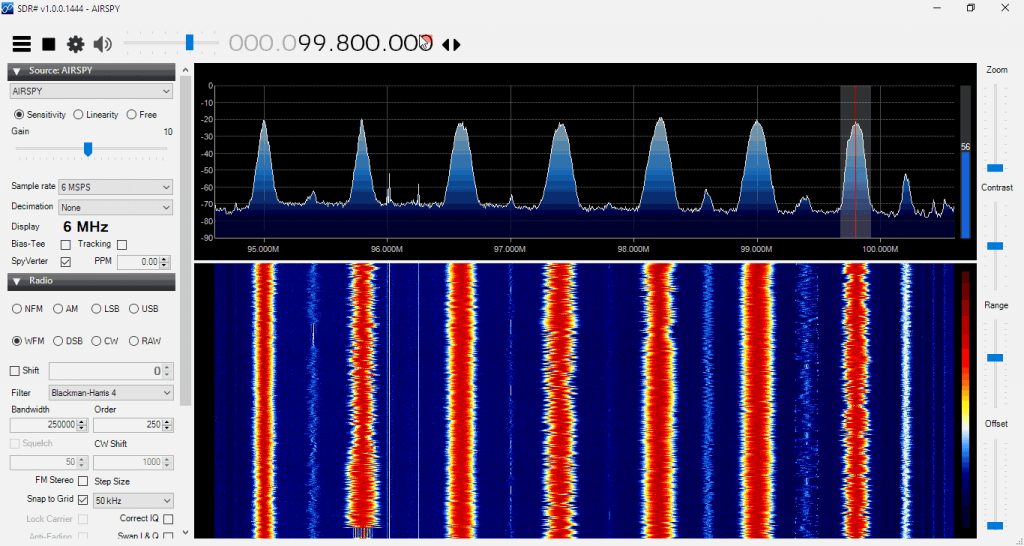
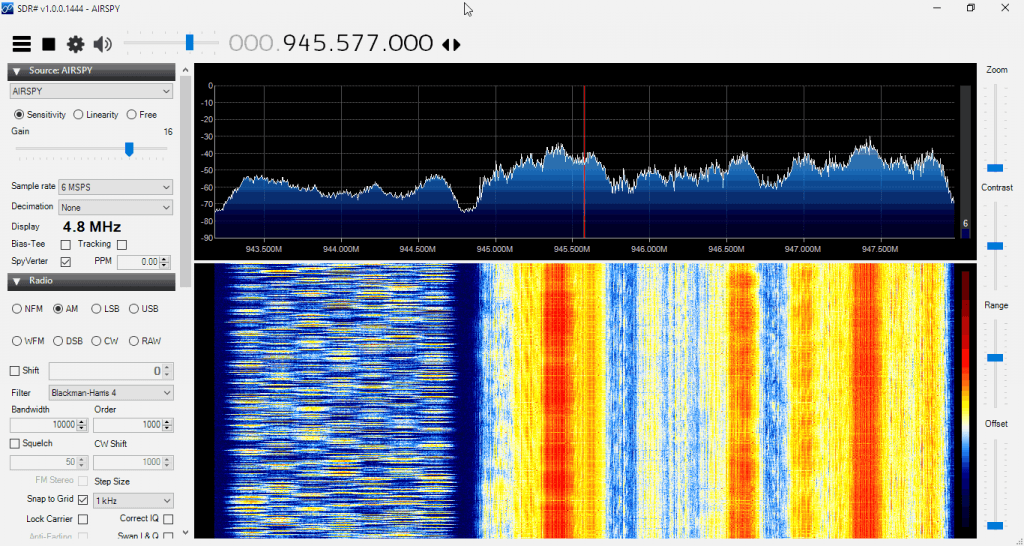
Airspy Mini or SDRplay RSP?
The SDRplay RSP already was a competitor to the Airspy R2, and now it appears that the Airspy Mini is even more of a competitor since they are so similarly priced. Because everyone will want to know, here is a quick summary of the SDRplay RSP vs Airspy Mini.
First, please read through our previous review to see the main differences between the Airspy R2 and RSP. Although the review was written for the Airspy R2, we believe that that review is still relevant to the Airspy Mini as well since performance between the R2 and Mini is almost identical. Below is a tabulated comparison.
| SDRplay RSP | Airspy Mini | Notes | |
| Price (Direct) |
$149 USD + $15 - $35 |
$99 USD $148 USD (with SpyVerter) + $5 -$20 shipping |
The two units are similarly priced when the SpyVerter HF option is considered. |
| Price (USA Distributor) | $149 USD + Free shipping |
$99 USD $148 USD (with SpyVerter) + $12.50 shipping |
Airspy: Airspy.us RSP: hamradio.com |
| Price (EU Distributor) |
£118.8 inc VAT + ~£10 - £20 shipping. Converted to euros: €154.7 incl. VAT + ~€13 - €26 shipping. |
No EU distributor yet. Estimated cost via China: €106 incl. est 20% VAT €169 incl. est 20% VAT (with SpyVerter) + €4.5 - €18 shipping |
Mini not yet available from a EU distributor at the time of this post, but seems to be on its way to ML&S at hamradio.co.uk and eurosdr.co.uk The RSP is produced in the UK. It can be bought from its official site at sdrplay.com. |
| Freq Range | 0.1 - 2000 MHz |
24 - 1800 MHz 0 - 1800 MHz with SpyVerter. |
|
| Max Usable Bandwidth | 7 MHz | 5 MHz | |
| Dynamic Range | Good | Excellent | Dynamic range is one of the most important factors in a high performance radio. Better dynamic range means that strong signals will not block the reception of weaker signals, or cause the radio to overload. The lower dynamic range of the RSP can be alleviated by using external filters, though this may reduce sensitivity slightly depending on the type of filter used. |
| Sensitivity | Excellent | Good |
The RSP has better sensitivity because of its built in front end LNA. The Airspy's sensitivity can be increased to the same level as the RSP whilst maintaining its high dynamic range by introducing a good high dynamic range LNA like one based on the PSA4-5043 or PGA103 chips. The LNA may be conveniently powered via the Airspy bias tee. Using an external LNA (as opposed to a built in one) also helps overcome losses from coax cable and other components in the signal path which can boost SNR by a significant amount. See the SNR test here for more information. |
| Frequency Stability | Average | Excellent | The RSP does not use a TCXO, whereas the Airspy uses a low phase noise 0.5 PPM TCXO. |
| Software |
Official: Mirics DVB-T demodulator, Mirics FM/DAB player Unofficial: SDR#, HDSDR, SDR Console, SDR-J, SoDiRa, Spectrum Lab, dump1090, SDR Touch (beta). |
Official: SDR#, SpectrumSpy, AstroSpy, ADSBSpy. Unofficial: HDSDR, SDR Console, SDR-J, SoDiRa, Spectrum Lab, dump1090, Unitrunker, SDRTrunk |
There is no official general purpose software for the RSP, but they have recently acquired Studio 1, and may offer this to their customers at a reduced price in the future. |
| Enclosure | Plastic | Metal |
A metal enclosure is desirable to keep out interfering signals. |
| Extra Features | None | Bias Tee | The bias tee allows you to easily power external components like upconverters and LNA's via the coax cable. |
| Designed In | UK | France | |
| Manufactured In | UK | China |
Conclusion
It is quite clear that the Airspy team have come out with an amazing SDR that is an excellent upgrade for those who are thinking of upgrading from an RTL-SDR but need to stick to a budget. Its RX performance is almost identical to its bigger brother the Airspy R2, but has a smaller maximum bandwidth and less ways to expand the unit in advanced experiments. If you are looking for something better than an RTL-SDR and don't need the advanced features offered by the Airspy R2, then we highly recommend the Airspy Mini.
More information about purchasing the Airspy Mini can be found at airspy.com.
Disclaimer: The Airspy Mini was provided to us for free by the Airspy team in exchange for an honest review.
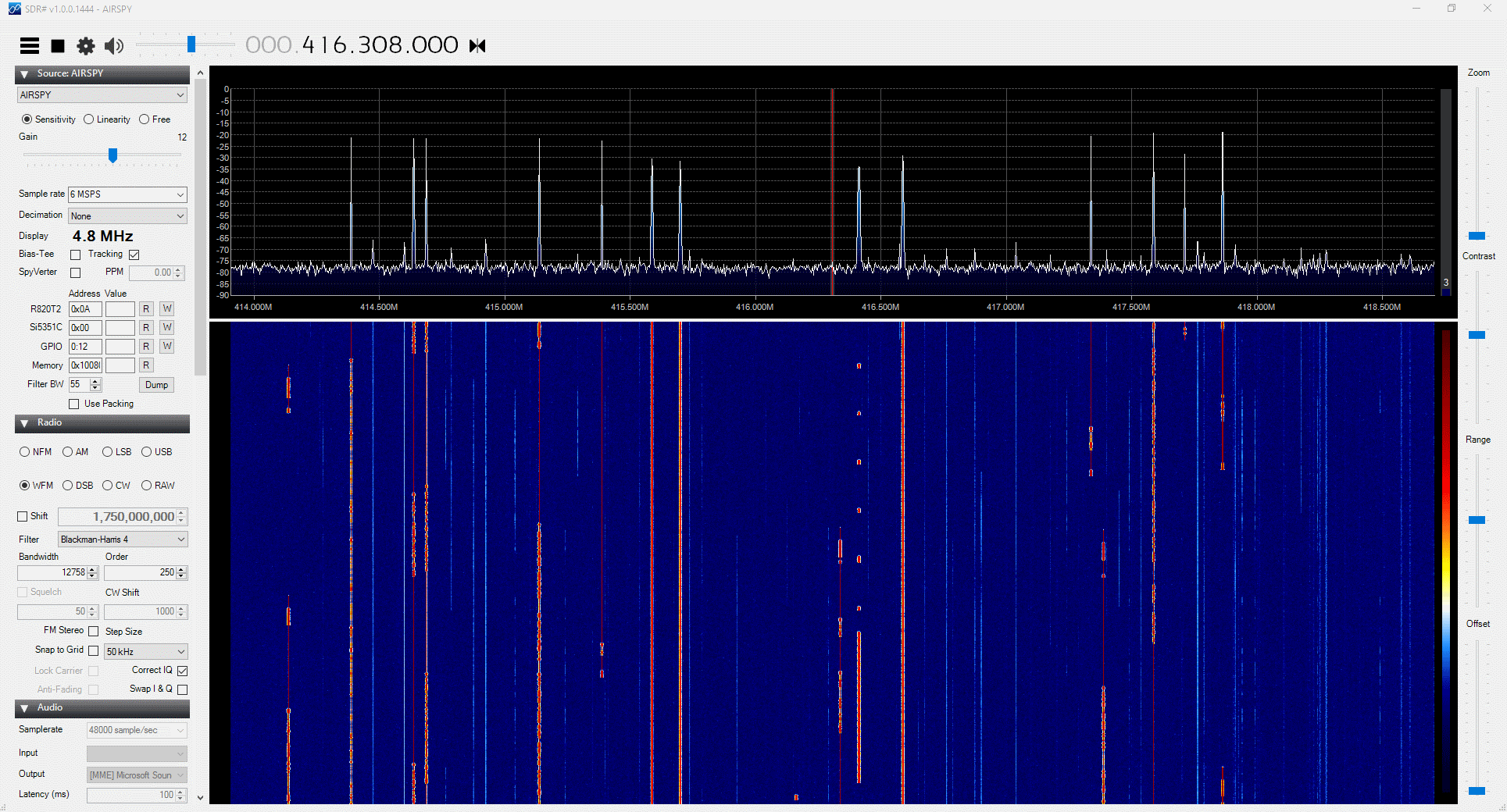
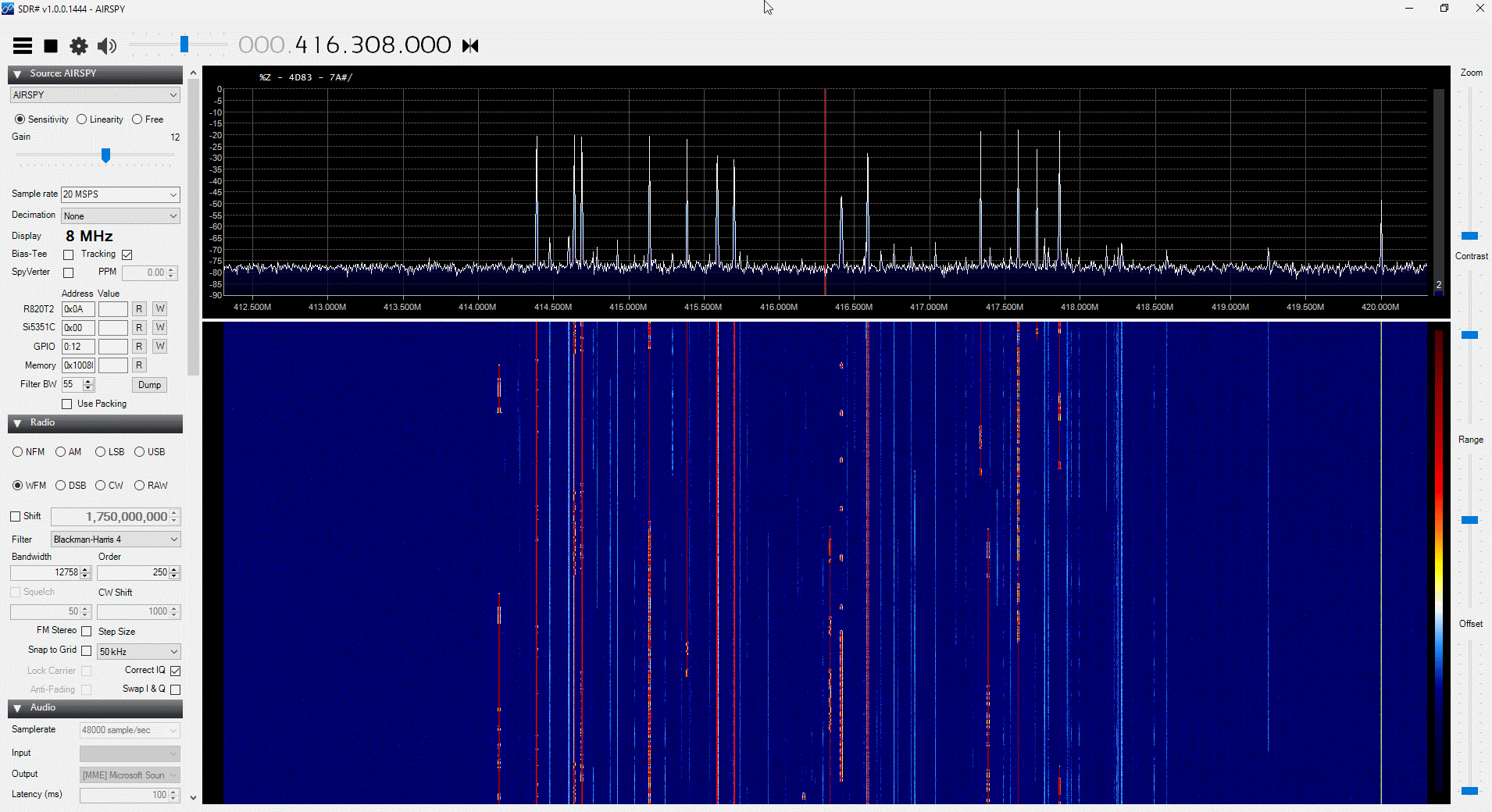
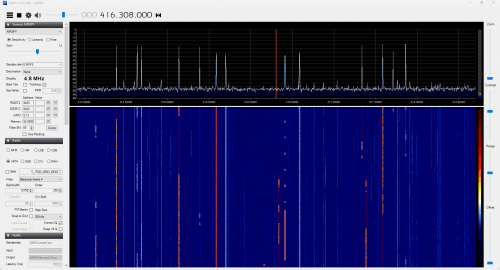
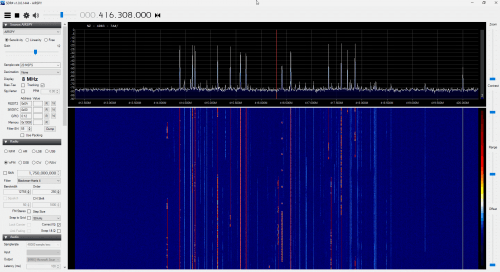
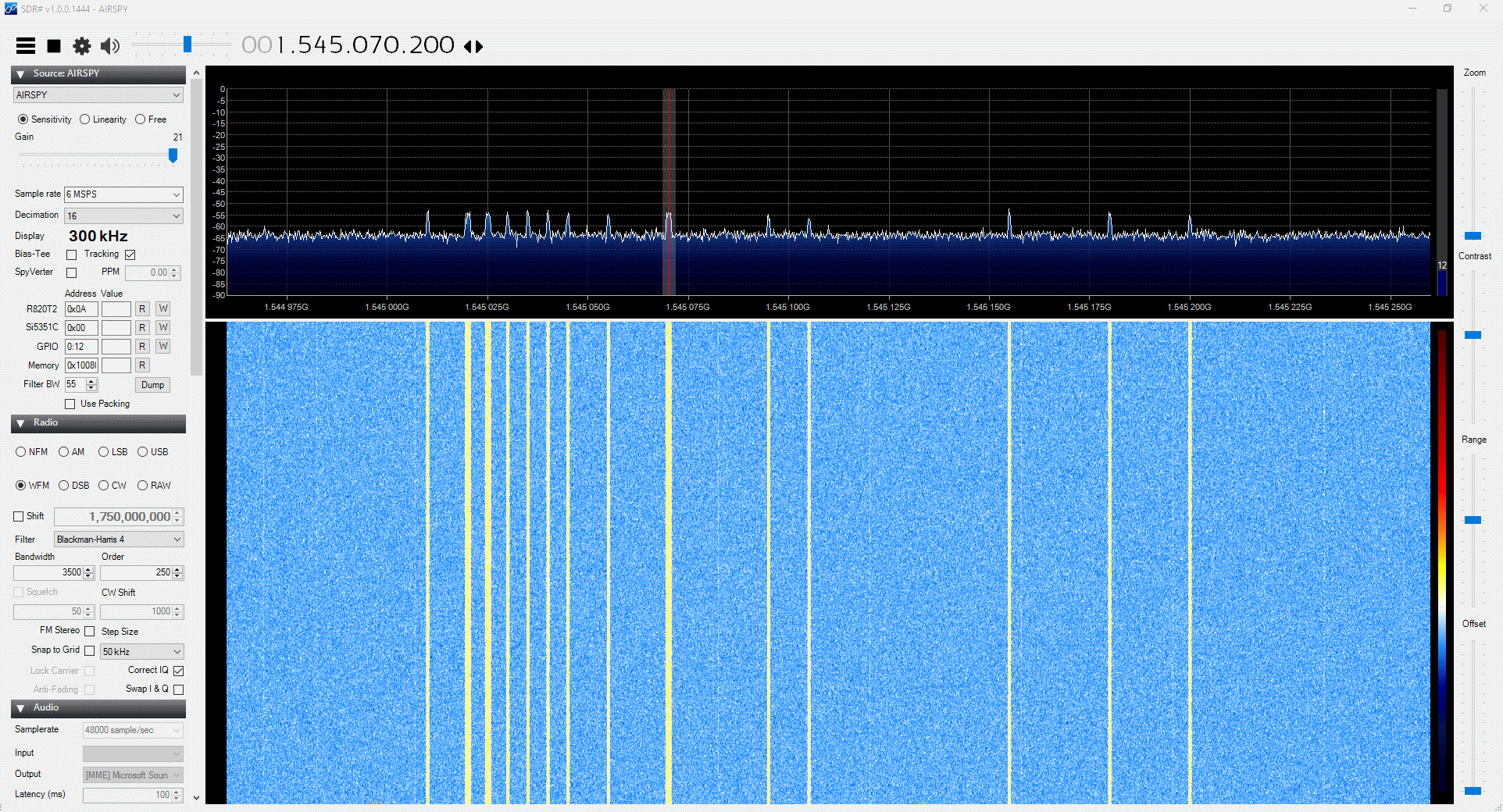
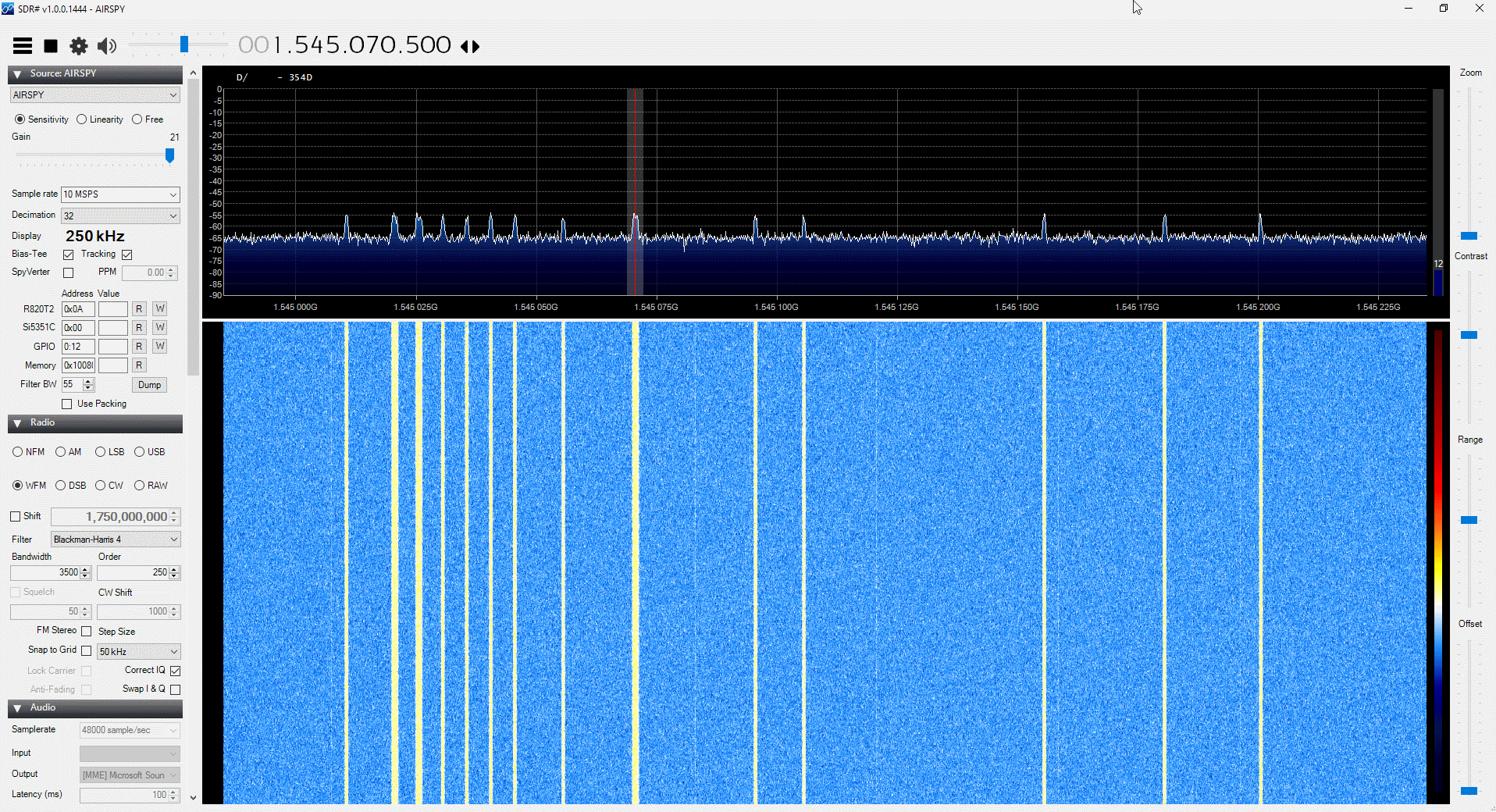
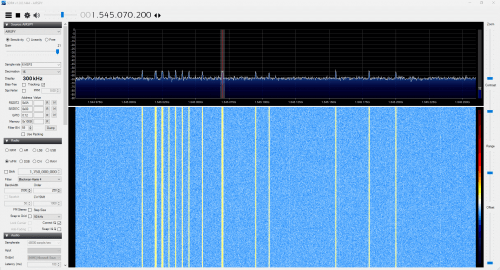
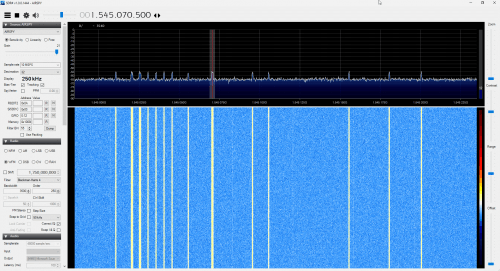
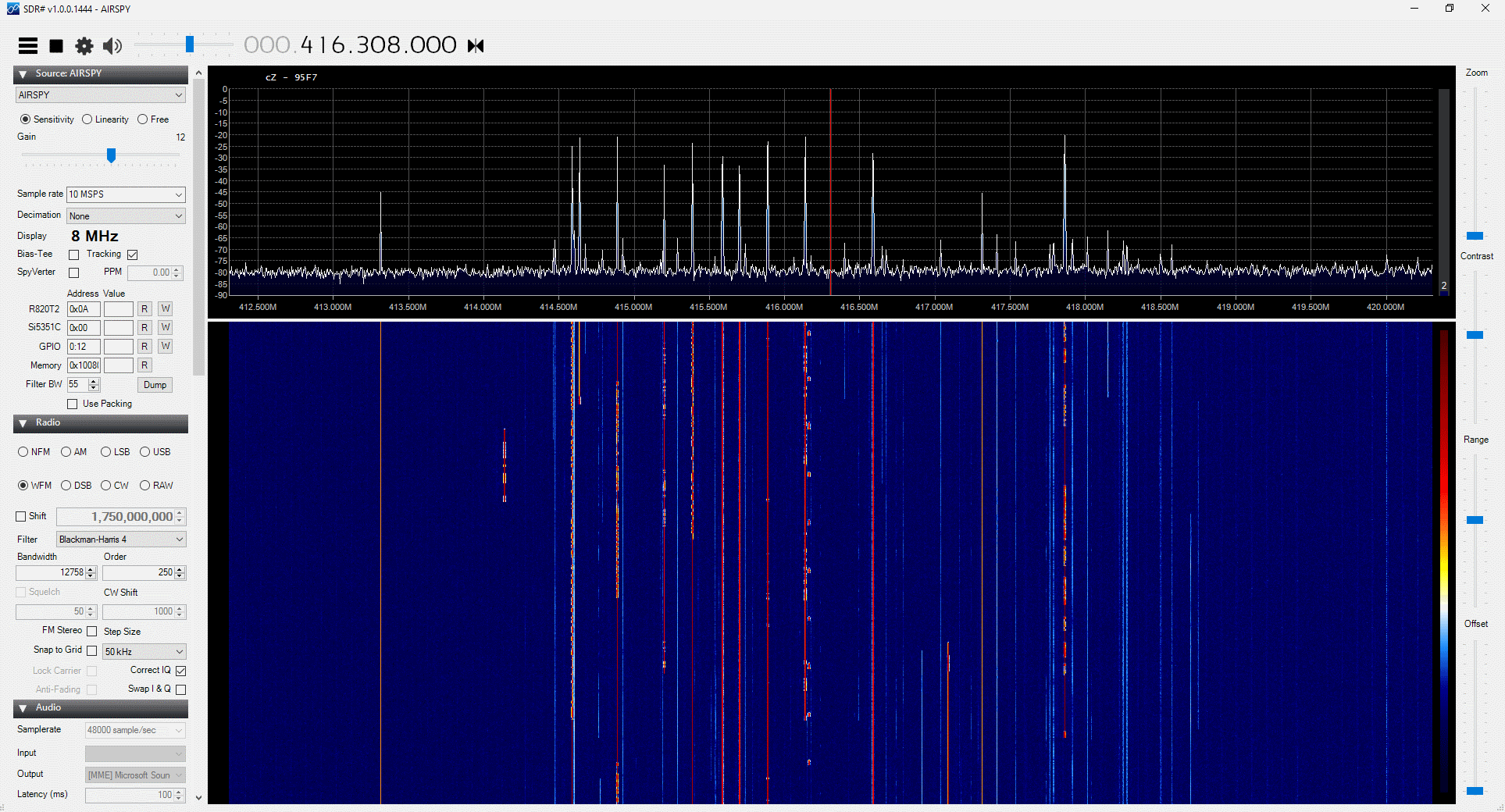

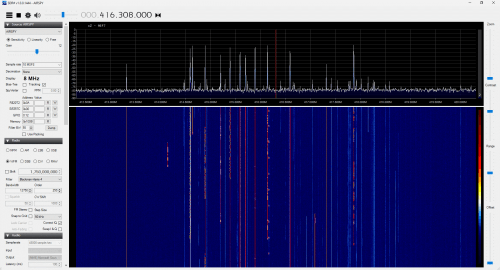
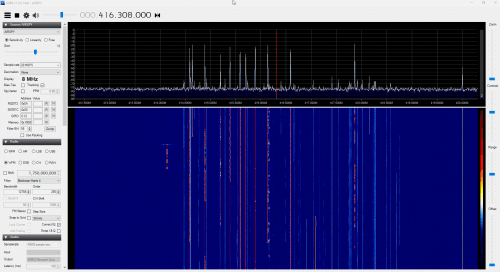
For the moment I can’t recommend buying an Airspy Mini
You see, I wanted to upgrade from my “classic” RTL-SDR V3 (which works perfectly), and 5 MHz BW and 12 Bits ADC sounded like a step up, well…
Just plugged my freshly received Mini, “Drivers not found”, so much for the seemingly Plug&Play… (Desktop W7 specially installed for radio stuff)
Installed the drivers and eagerly launched SDR#, well I wanted to test it on a trunked LMR maintained by a friend (top notch stuff, analog FM but GPS synchronized network)
With the same signal, feedline, antenna and all, swapping between the RTL-SDR and the Airspy Mini, I have in average 5 SNR points less on the Mini !
And this is in Sensitive Gain mode with the cursor at 14 (sweet spot, the max before it start to be too much gain…)
In Linear mode with the cursor at the default of 12, I lose 11 SNR points compared to the RTL V3 !!!
Granted, the signal is much cleaner on the Airspy, no more aliasing and ghosts signal (they creep up a bit at 14 in Sensitive mode thought…)
As an RF professional, I prefer selectivity (and spectral purity) to sensitivity, and it’s always a dilemma and a trade-off, but loosing 11 SNR point with a “so-called” superior Airspy model, is just too much to be worth it !
And with the roll-off in SDR# at 6 MSPS you only have 4.5 (and not really 4.8) MHz of really clean and uniform bandwidth ! Better with 2 RTL-SDR to cover 4 MHz, or maybe just buy an RSP1A… (which I intend to test soon too to do some comparison)
just one clarification, I work in an ESD-safe lab, so it is not static electricity fault ! Either this design is bad, or they delivered me a defective model (purchased on ITEAD…)
Buyer Beware…
BTW, as a side note, the build quality of the RTL-SDR V3 and (especially) the dipole antenna, have declined, the finish seems more “rough/coarse” and several V3 from 2018-2019 were able to maintain a 0.75 ppm accuracy, the models I just bought last month seems to only maintain a 1.5 ppm accuracy…
The “Chrome” coating on the antennas peels off after a few days of use too…
Maybe it’s due to Covid, they can’t achieve the same “quality-control” as before… too bad but still cheap enough for “attritable” test componants…
On the plus side, DHL shipping is probably too expensive for the amateur tinkerer, but wow, 5 days to receive the stuff is amazing given the pandemic.
I’m curious to hear anybody feedback on this subject
When running on 16941Ghz , after a warm-up period the RX signal stops and the wave form starts bouncing up and down and becomes distorted. I then disconnect it and reconnect it and restart and the process starts over again. It will actually begin receiving a signal but immediately stops. I have tested both outside and inside to eliminate the possibility of environment conditions. Additionally, I Compared it side by side with my NooElec.com Nesdr SMArtxr which does not have this issue.
> Requesting an RMA as it appears that this is a defective Airspy. This was a month ago (9/18/19)…. I provided several screen shots of SDR# that clearly illustrated the issue. It is simply unusable. After MANY emails back to them they finally “said” they would RMA it. I ask them what the next steps are and what do I need to do. All I am getting are crickets… All I have a piece now useless junk. Buyer beware.
A warning about running 10 msps. If you thought the AirSpy mini gets hot at 6msps – it gets hotter at 10msps – Airspy.com do not recommend running it a 10 msps for extended periods but 6msps is not a problem. Not only that in debug mode some extra info and tick boxes appear – under no circumstances should you click on any of the boxes marked “W” – that will likely turn your AirSpy into a [lego] brick. I wouldn’t like to test recovery by factory reset.
I wasn’t 100% happy with how warm the AirSpy mini runs – so I have added a set of aluminium heatsinks – a pair of 20 mm x 20 mm x 6 mm attached to each flat side with 1mm thick heat conductive self-adhesive tape. Instead of feeling hot to the touch it is now “warm”. Youssef explained that all the cooling is by conduction – there is no airflow in the enclosure – so it depends on the airflow round the enclosure – and the heatsinks aren’t needed – but the exposed curved top/bottom of the Airpy case is certainly cooler to the touch and it actually feels cooler running 10 msps than it did running 6 msps without the heatsinks. The whole lot only cost around £5.50/$6.50 via ebay. They look cool too!
Dave, which side of the Airspy Mini is getting hotter (I mean top with AIRSPY logo or bottom)?
I would like to clamp the Airpsy with one side to a piece of metal to release some heat, but I don’t know which side would be best.
Thanks!
I am planning to upgrade from a RTLSDR to a better SDR. I have been looking at the SDRplay(~$149) and the Airspy Mini with the Spyverter up-converter(~$159). I don’t know which one to get, in the area I will be using it in is a bit noisy, and I have heard the SDRplay might not operate the best with that. Which one would give me the best price to performance, especially with weak signals and with the least interference?
Airspy is better if you have lots of strong signals (or strong interference) around since it will not overload as easily as the other SDRs. SDRplay is a little more sensitive, but if you have overloading from strong signals you won’t be able to get the most of it. Airspy + external bias tee powered LNA seems to be the winning combo as this gives you good sensitivity and good handling of strong signals.
Okay, thanks!
Unfortunately – and I am looking at this carefully – including e-mailing stuff to Youssef – my AirSpy mini shows a noticeably worse performance for appear to be Low IF images than the SDRPlay does for zero-IF images. I cal then low IF images – but if anyone has another explanation for the images that appear at +/- sample rate- tell me. My almost sole interest is DXing in the FM-broadcast band – so being able to pull out weak signals. My reference is a local station on 102.8 MHz with 6 msps sample rate it produces an image on 108.8 MHz – this in itself is not a problem. But then I can find similar +6MHz signals from other (not so) strong stations. And weaker image on the low side. These images tune in reverse. They behave the same as zero IF images.
Now whatever the underlying reason – to reduce the image sufficiently I have to tun down the sensitivity and it is no longer as sensitive as the SDRPlay or an analogue tuner and I will lose DX. No amount of playing with the free mode will give me senistivity and image free. I estimate the image appears when the signal is 50dB above the noise floor. For sensitivity approaching that of the SDRPlay the image can be 10-12dB above the noise floor. In contrast the zero IF image of the same station on SDRPlay is coming and going with the noise as the auto-correction bobbled about. [Info: I set a centre frequency of 105.6 MHz – so the image of 102.8 MHz was produced on 108.4 MHz]. The comparison is between AirSpy on SDR# build 1444 and SDRPlay on SDR# build 1404 using the I/Q correction in the SDRPlay API. I run SDRPlay with LNA off as I have an external LNA.
This is separate to the overloading you can get when whacking the gain too high.
So regardless of the technicalities my experience is that you can get IF images from strong signals before they will show on SDRPlay. Fortunately for me I know the stations that can give in-band images and a bit of work with a spreadsheet let me work out what centre frequencies to use so they fall on top of local stations in the band. Not only that the main DX directions miss the strong locals apart from 102.8 MHz
So you have to evaluate the whole package – I would just like some fellow FM-DXer with an AirSpy/AirSpy mini to quantify any issues with low IF images they might have – just in case it is my particular device. And incidentally when you run SDRPlay in low IF mode – you will find zero IF images spaced equidistant from the centre frequency.
Youssef has released build 1446 which improves the image rejection in the presence of strong signals and re-optimises the settings on the fly every time the centre frequency changes. It has made a significant improvement. Most people would fit an FM band-stop filter – but some of us DX on the FM band with great results – so we need every trick we can find to pull out weak signals from next to strong ones. For the best rejection of ‘low IF’ images (don’t know what else to call them) you need to use the Free mode for setting the gain – and experiment with the settings. Low mixer gain will minimise the chances of images due to mixer overload – but there is a limit. Choosing the centre frequency so any low IF image falls on an already occupied frequency then reduces the potential of blocking weak DX.
Of course the improvement with build 1446 doen’t only benefit the mini.
What is the difference, if any between the AirSpy R0 and R2? I bought my AirSpy shortly after it was announced. Do I have an R0 or an R2? Also how can I determine what I have?
Thanks.
https://www.rtl-sdr.com/airspy-revision-2-released/
The only way to tell them apart is to earth yourself, unscrew the two screws by the SMA connector and side it out a half an inch and look at the board(best not to touch the board a lot of static sensitive components on it). If it has gold boarder (see image above) and the text “AIRSPY NOS R2”, written on it then it is R2, if it does not have the gold boarder then it is R0.
Differences between the original Airspy and updated version, things like improved socket fixing, shielding and EM protection so pretty much everything that was brought to the attention of the developer as the faults showed up but were dismissed by him on the Airspy forum as incorrect, irrelevant or user error.
Your assessment is absolutely right.
Is it possible to use Ham it up HF converter which i already own with the Airspy mini ?
I don’t know if it’s possible to deactivate the bias-t DC through software, i understood that delivering bias DC power
should “fry” the ham it up converter, thx by advance for answer.
Yes it’s possible. Just don’t turn on the bias tee in the software. I think there are DC blocking capacitors anyway, but the ESD diodes before those may or may not be able to withstand the voltage.
http://airspy.com/airspy-mini/
4.5v software switchable Bias-Tee 100% Compatible with SpyVerter and High Performance LNA
In regards to Bias-T It is the same as the Airspy NOS R2. A GPIO pin (P2_13) on the ARM MCU (LPC4370) toggles the enable pin Bias-T LDO (tiny chip in the top left of the images above), and it is off by default.
So yes, Ham-it-up will work no problem.
Thinking about using one of these for HRIT/HRPT downlink from weather satellites. Is 5 MHz usable bandwidth sufficient?
Wikipedia says METOP-A uses HRPT bandwidth of 4.5 MHz. Not sure if NOAA is wider?
EMWIN/HRIT is supposed to have a transmission rate of 400 kbps, which I am going to guess should fit comfortably within 5 MHz bandwidth (usually data rate is about the same order of magnitude as bandwidth, for example METEOR-M is about 120kHz for 72 kbps using PSK).
I know that bandwidth is typically the reason why RTL dongles are not sufficient for these applications. So I definitely need an upgrade. Would really hope that AirSpy Mini is the dongle I am looking for!
Both the Airspy and the SDRPLAY RSP have 12 bit ADC with ENOB of 10.7. The theoretical dynamic range for both would be about 66 dB. How can the Airspy claim a dynamic range of 80 dB? Unless, they are counting the contribution of decimation/oversampling over a much narrower bandwidth.
They are sampling at 20 MHz. The difference in dynamic range shows up in the tests anyway.
Thanks! That would account for the 10 MHz bandwidth (Nyquist sampling). It does appear there are a couple of posts out there from last year comparing/demonstrating the dynamic range of a number of SDRs. Should make for some interesting reading :).
Damn! Why they use this ugly and extremely long SMA connector? Why it 1/2″ long on mini? Why if only 1/4″ is required? Why? It must be 2 times shorter on mini, and R2/R3 must show BNC instead of SMA!
Size does matter.
A few people complained that the shorter 1/4″ SMA connectors used on our SMA RTL-SDR dongles weren’t long enough to fit some SMA plugs used on their antennas. The only solution to accommodate for those connectors that have a slightly different SMA spec is to use the longer SMA connector. I guess this is why the Airspy guys chose to also use the long SMA connector.
Excellent comparison test, thanks! This finally confirm equal performance between R2 and Mini
I think there is inaccurate calculation of the price in EU; for $99 it cannot be €82.2 including VAT; is must be around €108-€110 including VAT
Thanks, fixed. According to current exchange rates $99 USD works out to 106 euros incl 20% VAT. I had accidentally converted to GBP before.
Regarding price. It cost me just under £110.00 (before the exchange rate crashed) – I paid the premium for DHL and their customs clearance and had it in six days
Airspy R2 Circuit Board ? – The PCB has R0 written on it in the picture.
Oh uploaded the wrong image, will update it in a minute, but the R0 and R2 PCBs look very similar anyway.
Thanks, the R0 just jumped out at me from the image, and I was wondering if it was the wrong image.